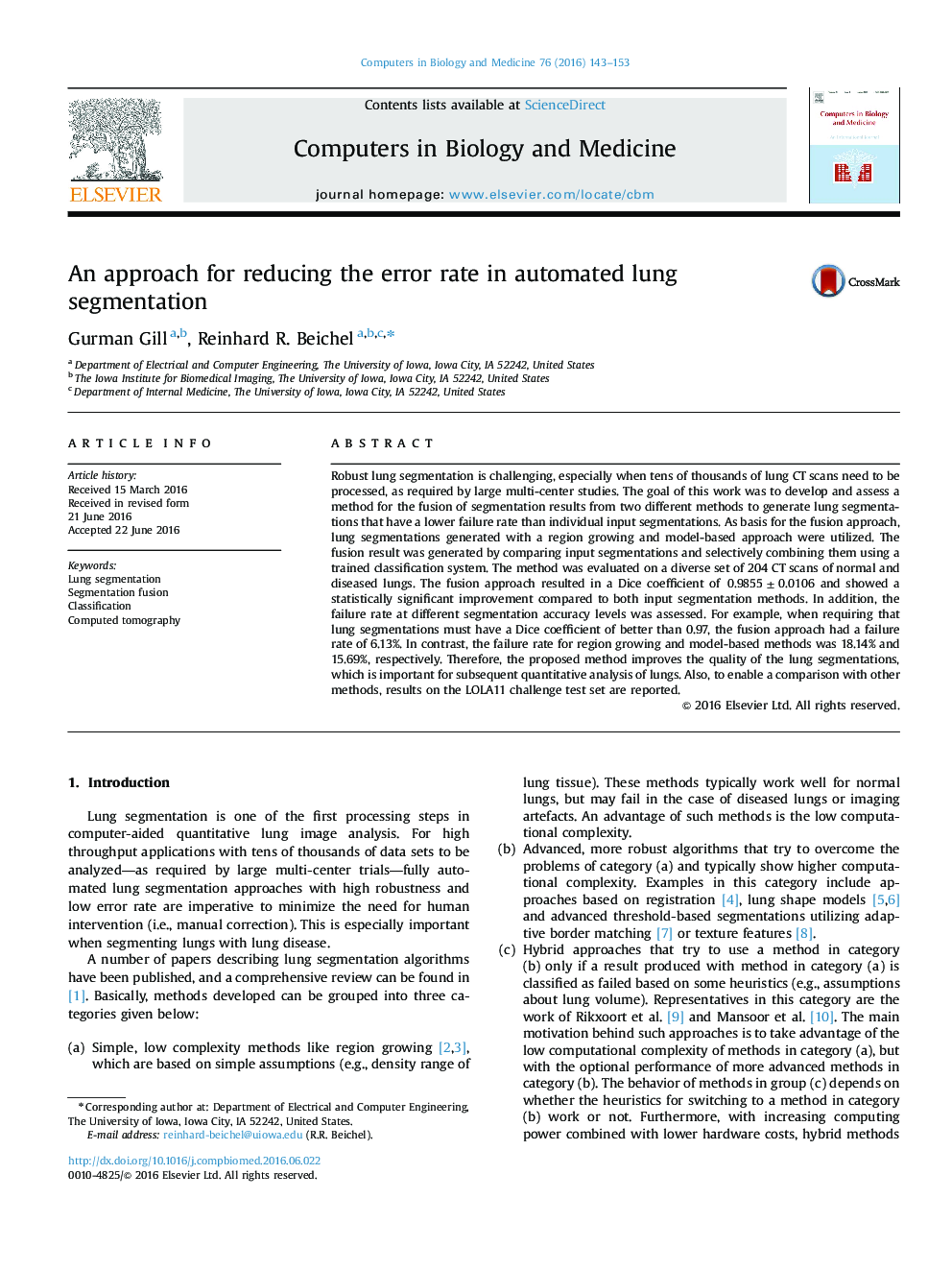| Article ID | Journal | Published Year | Pages | File Type |
|---|---|---|---|---|
| 504773 | Computers in Biology and Medicine | 2016 | 11 Pages |
Robust lung segmentation is challenging, especially when tens of thousands of lung CT scans need to be processed, as required by large multi-center studies. The goal of this work was to develop and assess a method for the fusion of segmentation results from two different methods to generate lung segmentations that have a lower failure rate than individual input segmentations. As basis for the fusion approach, lung segmentations generated with a region growing and model-based approach were utilized. The fusion result was generated by comparing input segmentations and selectively combining them using a trained classification system. The method was evaluated on a diverse set of 204 CT scans of normal and diseased lungs. The fusion approach resulted in a Dice coefficient of 0.9855±0.01060.9855±0.0106 and showed a statistically significant improvement compared to both input segmentation methods. In addition, the failure rate at different segmentation accuracy levels was assessed. For example, when requiring that lung segmentations must have a Dice coefficient of better than 0.97, the fusion approach had a failure rate of 6.13%. In contrast, the failure rate for region growing and model-based methods was 18.14% and 15.69%, respectively. Therefore, the proposed method improves the quality of the lung segmentations, which is important for subsequent quantitative analysis of lungs. Also, to enable a comparison with other methods, results on the LOLA11 challenge test set are reported.
